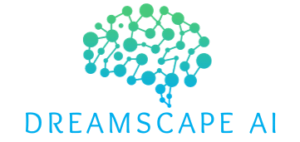
How long has artificial intelligence (AI) existed?
AI may appear to be a relatively new development in technology at times. I mean, it’s only been widely used for the past few years, right? But actually, artificial intelligence came into existence in the early 1900’s, even though the most significant improvements weren’t made until the 1950s.
It is important to understand it’s past if you want to understand its present and possible futures. The fascinating journey of its development reflects both the human search for knowledge and the a lifelong objective of creating intelligent machines. This blog discusses the major developments, discoveries, and fundamental changes that have shaped the development of artificial intelligence in an effort to put together this complicated web.
The Conceptual Foundations of AI’s Origin?
The idea of a universal machine that could duplicate any task requiring human intelligence was first introduced by Alan Turing in the 1930s, and his visionary mind is associated with creating artificial intelligence. But a new era didn’t formally begin until 1956, at the Dartmouth Conference, when the term “Artificial Intelligence” was first used.
Visual Logic and Expert Systems: Early Attempts?
The earliest supporters of AI used symbolic logic to try and imitate human intelligence. The goal of giving machines the ability to reason was demonstrated by programs such as the General Problem Solver (1957) and the Logic Theorist (1955). But difficulties soon followed this initial zeal, resulting in what would eventually be named as “AI winter” during the 1970s and 80s.
Revolution in AI: Knowledge-Based Systems and Expert Systems?
An increase in interest in this field can be traced back to the 1980s, when rule-based programs known as expert systems were created to replicate human decision-making. These reasoning and problem-solving systems restored interest in this field and set the stage for future research.
The Development of Artificial Intelligence
As the 1990’s progressed, machine learning became the leading AI model. An important turning point was the transition from rule-based programming to data-driven learning. The deep learning revolution of the twenty-first century was made possible by the development of statistical techniques and the renewed interest in neural networks.
The transformative power of Deep Learning
Deep learning is an AI subfield that gained popularity in the 21st century, created after the architecture and operation of neural networks found in the human brain. With the help of enormous datasets and improved computing power, deep learning algorithms have delivered amazing results in difficult tasks like natural language processing and image recognition.
AI in Daily Life: From Self-Driving Robots to Virtual Assistants
AI’s widespread distribution in daily life was becoming more and more evident. Thanks to natural language processing, virtual assistants such as Siri and Alexa have become commonplace in homes. It’s practical applications are shown by separate systems in a number of industries, including healthcare and transportation, suggesting that intelligent machines will play important roles in our daily lives in the future.
Future Research and Ethical Issues
The importance of moral considerations has increased with the advancement of AI technology. Important questions were raised about algorithmic bias, data privacy, and the effect on employment. Looking ahead, there are a lot of exciting things that it can do in the future. These include creating AI that can be explained and reinforced, as well as fusing it with cutting-edge innovations like quantum computing.
In Conclusion
AI is constantly producing new concepts, finding solutions to issues, and achieving success. Artificial intelligence (AI) has developed from an idea to a universal force that is changing our technology world from its theoretical beginnings into the present. This means valuing innovation while simultaneously considering effects of the development of intelligent robots. As this technology develops, new possibilities and trends emerge that fundamentally alter our conceptions of intelligence and human history.
You may also read Humane AI Pin: The Future of Wearable Technology

Hi, this is a comment.
To get started with moderating, editing, and deleting comments, please visit the Comments screen in the dashboard.
Commenter avatars come from Gravatar.
Pingback: Humane AI Pin: The Future of Wearable Technology - DreamScapeAI
Pingback: 5 Best Machine Learning Careers, Jobs and More - DreamScapeAI